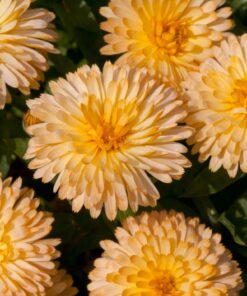Phlox Grammy Pink and White pack of 8-10 seeds Imported
₹99.00
Out of stock
Email when stock available
SKU: PhloxGrammyPinkandWhite
Category: Winter Flower Seeds
Phlox Grammy Pink and White Scientific Name : Phlox drummondii
Common Name : Phlox
Blooming Season : Spring, Late Spring
Plant Habit : Mounded
Spacing : 8 – 10″ (20 – 25cm)
Height : 8 – 10″ (20 – 25cm)
Width : 10″ (25cm)
Exposure : Sun
Grower Information :
Seed supplied as: Primed.
Plug crop time: 4 to 5 weeks
Transplant to finish: 7 to 8 weeks
- The most compact F1 phlox.
- Excellent uniformity makes it very manageable in packs and pots.
- Vigorous, free-flowering plants produce one-of-a-kind bicolour blooms all season in mixed containers, gardens and planters.
- Uses:Plants for the border, pot and container plants, plants for patio and window boxes, cut flowers
- Exposure:Sun – Partial shade
- Garden height:28″ / 70 cm
- Crop time:14-15 weeks
- Sow time:January for flowering in May (artificial long days); May for flowering in September (natural day length); July for flowering in January (artificial long days)
- Sowing method:3-5 seeds per plug, sowing in final pots is possible
- Germination*:10-12 days at 68-70 °F (20-21 °C), cover seed lightly with vermiculite after sowing. To prevent premature flowering, keep plants vegetative with a four hour night interruption
- Growing On:Transplant plugs after 3-4 weeks. Grow on at 58-60 °F (14-16 °C). Cool temperatures promote a good plant habit, but may delay flowering.
- Media:Use a well-drained, growing substrate with 20-30 % clay, 1-1,5 kg/m³ complete balanced fertilizer, 0-2 kg/m³ slow release fertilizer (3-6 months), iron-chelate, micronutrients, pH: 6.0-6.5. Use a sterile medium and sterile pots/containers as preventative measures against Fusarium and Verticillium. Field: sandy loamy soils with good drainage and moderate nutrition levels. Standard fertilization: 80-100 g/m² slow release fertilizer. Disinfect the soils in greenhouse before planting.
- Temperature:Grow at 12-15 °C. Callistephus do not grow temperatures below 8 °C and do not tolerate frost. The lower the temperature, the better the plant habit but onset of flowering will be a little delayed. Lower temperatures combined with short days cause the development of a leaf rosette and short stems.
- Fertilization:Moderate-high fertilization levels are required. Fertilize the crop weekly with 100-150 ppm nitrogen (at 2 kg/m³ slow release fertilizer in substrate), using a potassium balanced fertilizer (N: K2O-ratio: 1:1,5). Avoid high ammonium and high nitrogen levels. High nitrogen levels will cause smooth stems. Prevent magnesium deficiency by applying magnesium sulphate (0,025 %) 1-2 times and in case of iron deficiency apply iron-chelate for 1-2 times.
Field: N min soil value: approximately 150 g/m².
Be the first to review “Phlox Grammy Pink and White pack of 8-10 seeds Imported” Cancel reply
You must be logged in to post a review.
Related products
Winter Flower Seeds
Carnation Seeds Giant Chaubad Mix Color seeds pack of 30-40 seeds Open Pollinated
₹60.00
Winter Flower Seeds
Nasturtium Alaska Seeds Mix color pack of 15-20 seeds Open Pollinated
Rated 4 out of 5
₹60.00














Reviews
There are no reviews yet.